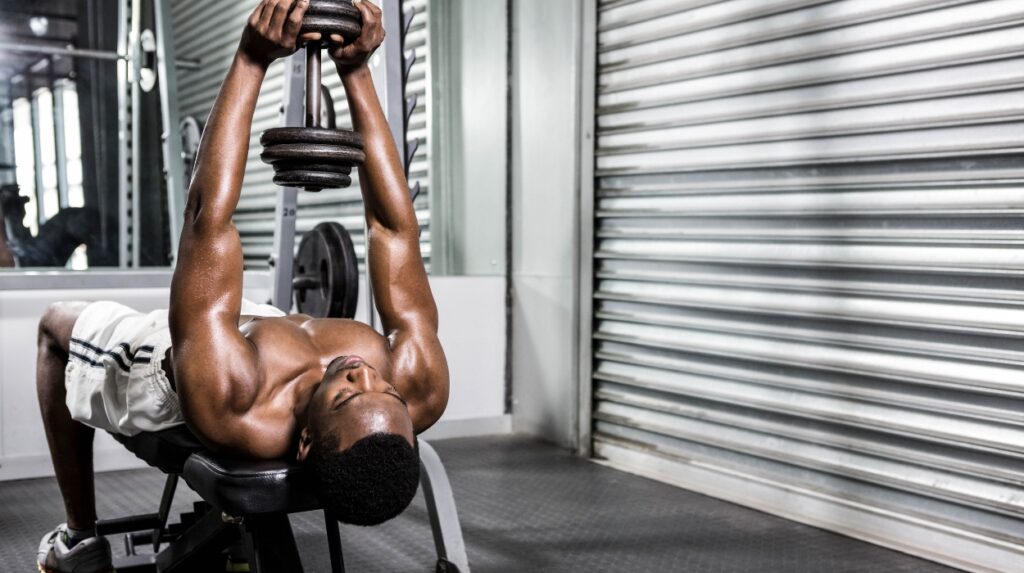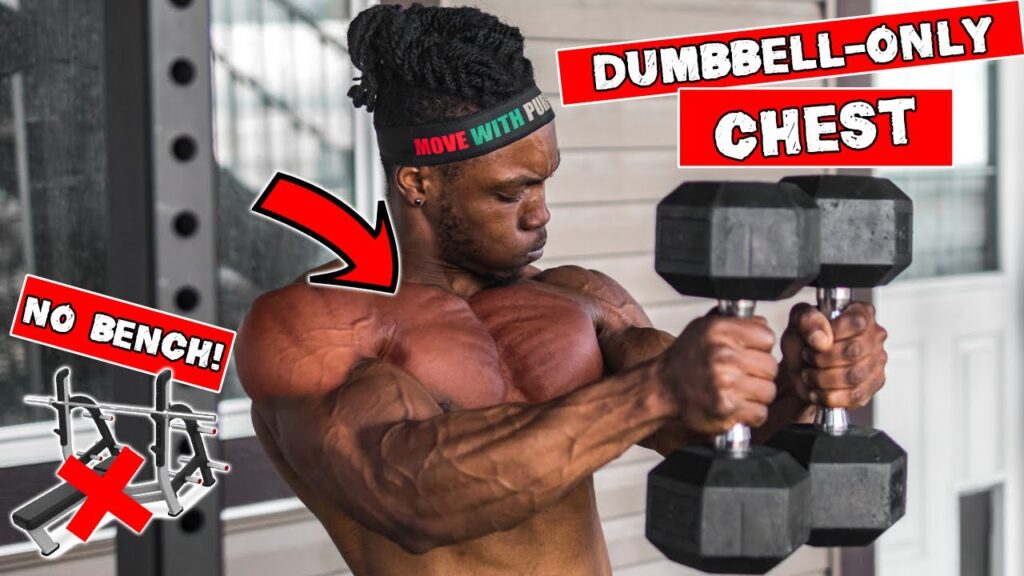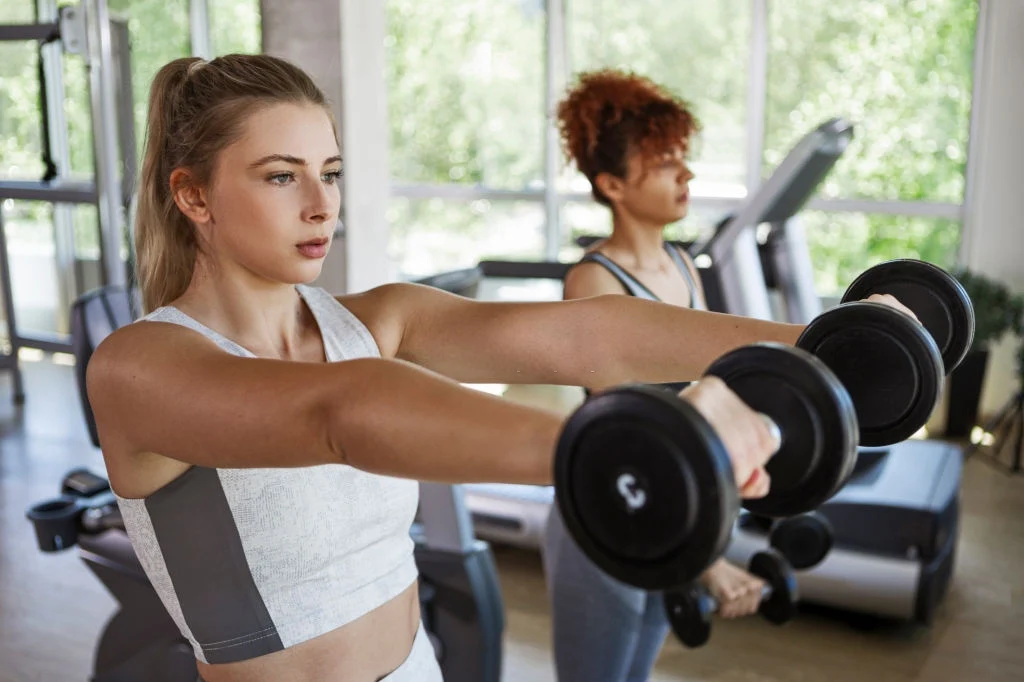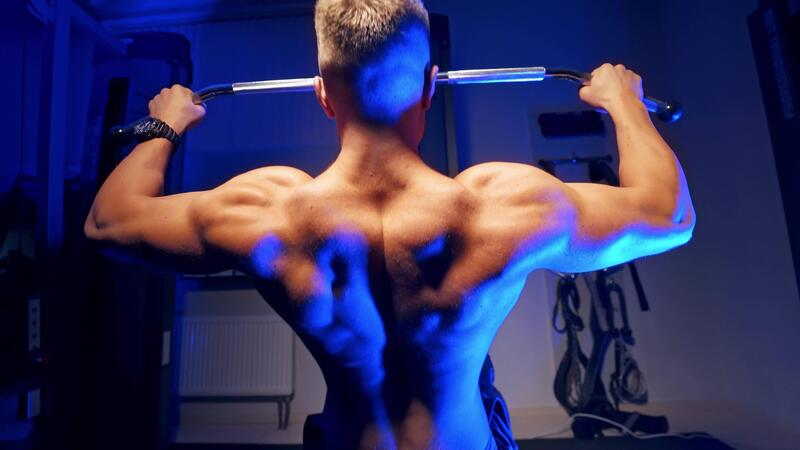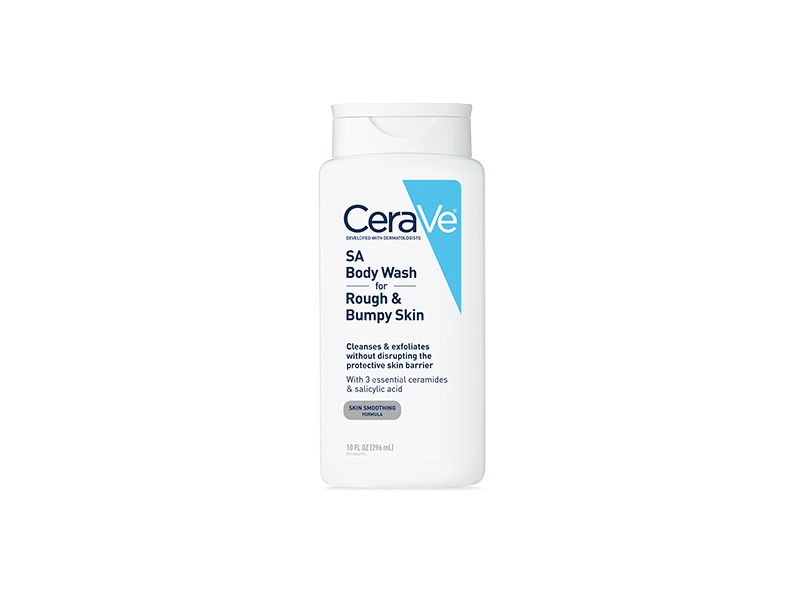Chest Workout with Dumbbells – When it comes to building a powerful and well-defined chest, you don’t need a fancy cable machine or heavy barbell.
With just a pair of dumbbells, you can sculpt your pecs, increase upper body strength, and enjoy a highly effective workout—whether you’re training at home or in the gym.
This guide will walk you through the best dumbbell chest exercises, how to structure your routine, and tips for maximizing your results. Let’s get started.
Why Choose Dumbbells for Chest Workouts?
Dumbbells offer several unique advantages compared to barbells and machines:
Increased Range of Motion
Unlike barbells, dumbbells allow your arms to move independently. This creates a deeper stretch at the bottom of the movement and greater contraction at the top, especially in pressing exercises.
Improved Muscle Balance
Dumbbells force each side of your body to work independently, helping correct muscle imbalances and promoting better symmetry.
Safer for Joints
Because you’re not locked into a fixed movement path (like with a barbell), dumbbells allow for a more natural motion that’s easier on your shoulders and elbows.
Home-Friendly
All you need is a bench and a pair of dumbbells to perform a comprehensive chest workout—perfect for home gyms or minimalist setups.
Chest Anatomy 101: What Are We Training?
Chest Workout with Dumbbells – To train your chest effectively, it’s important to understand its structure:
- Pectoralis Major – The large, fan-shaped muscle that makes up most of your chest. It has two heads:
- Clavicular (Upper Chest)
- Sternal (Middle/Lower Chest)
- Pectoralis Minor – A smaller muscle beneath the pec major, involved in shoulder movement and stability.
Dumbbell exercises can target each part of the chest based on angle and grip, allowing for a more balanced development.
Best Chest Dumbbell Exercises (Beginner to Advanced)
Here’s a list of effective dumbbell exercises to target all areas of your chest.
- Flat Dumbbell Bench Press
Primary focus: Middle chest
How to: Lie on a flat bench, dumbbells in hand. Lower them to chest level, then press them back up.
Tip: Keep wrists straight and elbows at a 45-degree angle.
- Incline Dumbbell Press
Primary focus: Upper chest
How to: Use an incline bench (30–45°). Lower dumbbells slowly and press up with control.
Tip: Avoid flaring elbows too wide; keep the motion steady.
- Decline Dumbbell Press
Primary focus: Lower chest
How to: Lie on a decline bench and press the dumbbells up and together.
Tip: Ensure a strong grip and stable core for better control.
- Dumbbell Chest Fly
Primary focus: Inner chest and stretch
How to: With arms slightly bent, lower the dumbbells out wide, then bring them together over your chest.
Tip: Avoid letting weights drop too low—control the stretch.
- Dumbbell Pullover
Primary focus: Chest and lats
How to: Lie on a bench, hold one dumbbell with both hands, and lower it back behind your head before pulling it back up.
Tip: Focus on squeezing your chest during the upward movement.
Sample Chest Workout With Dumbbells
Here’s a structured chest day routine using only dumbbells:
Beginner Dumbbell Chest Workout
Flat Dumbbell Press – 3 sets of 10–12 reps
Incline Dumbbell Press – 3 sets of 10 reps
Dumbbell Fly – 3 sets of 12 reps
Dumbbell Pullover – 3 sets of 12 reps
Rest for 60–90 seconds between sets.
Advanced Dumbbell Chest Workout
Incline Dumbbell Press – 4 sets of 8–10 reps
Flat Dumbbell Press – 4 sets of 10 reps
Decline Dumbbell Press – 3 sets of 10–12 reps
Dumbbell Fly – 3 sets of 12–15 reps
Dumbbell Pullover – 3 sets of 15 reps
How Often Should You Train Chest With Dumbbells?
Beginners: 1–2 times per week with 48–72 hours of recovery between sessions.
Intermediate/Advanced: 2–3 sessions per week, often split across push or upper body days.
Make sure you’re also training other muscle groups to avoid muscular imbalances.
Tips to Maximize Your Dumbbell Chest Workout
- Progressive Overload
Gradually increase the weight or reps over time to ensure continued muscle growth.
- Use Controlled Tempos
Slow and controlled reps (e.g., 2 seconds down, 1 second up) increase time under tension, a key factor in hypertrophy.
- Activate the Mind-Muscle Connection
Focus on squeezing your chest at the top of each movement. It’s not just about moving weight—it’s about feeling the muscle work.
- Don’t Neglect Form
It’s better to lift lighter with perfect form than go heavy and risk injury. Keep your shoulders down and back, and control the entire movement.
Final Thoughts
Chest Workout with Dumbbells – A chest workout with dumbbells is not only effective but also accessible and joint-friendly. Whether you’re training at home or at the gym, dumbbells offer everything you need to build strength, improve definition, and achieve a balanced physique.
Stick to proper form, increase your weights gradually, and give your chest time to rest—and you’ll start seeing (and feeling) the gains.

